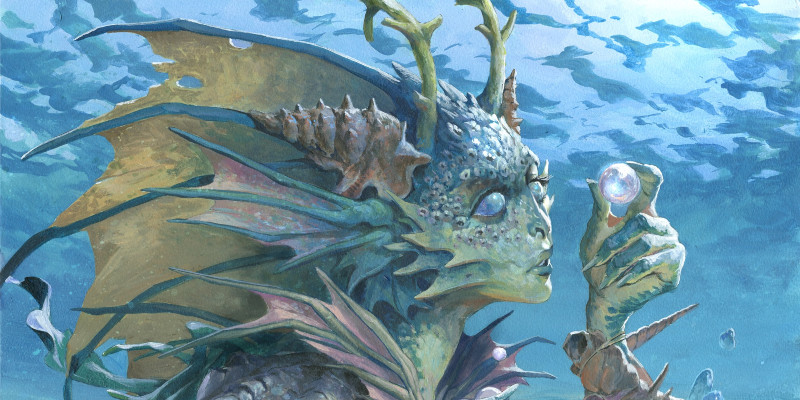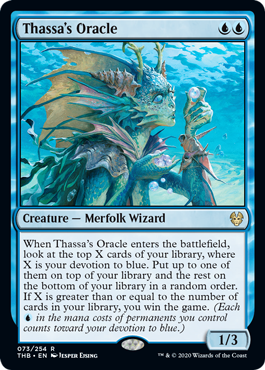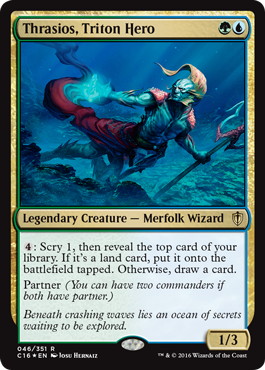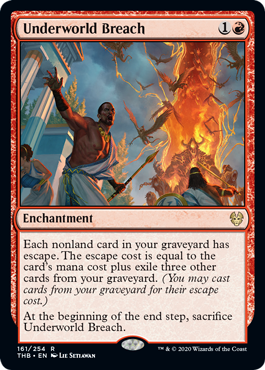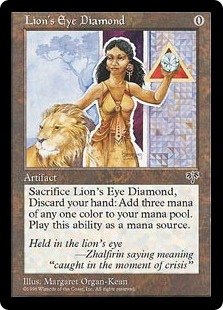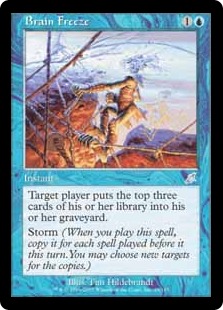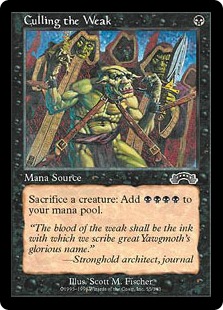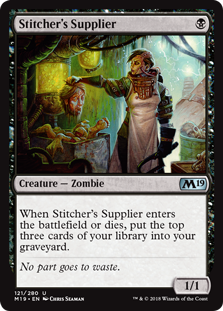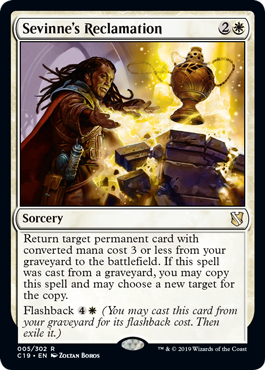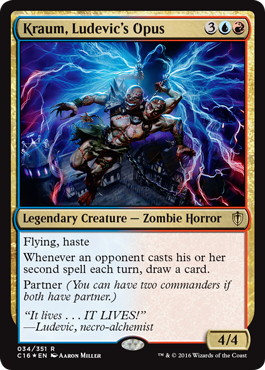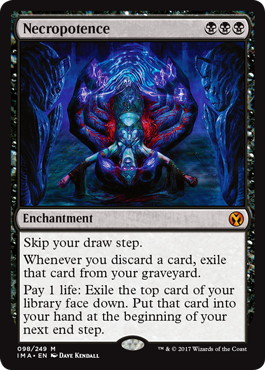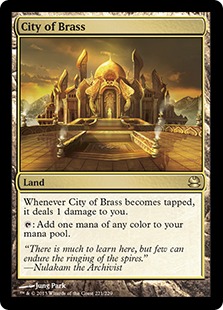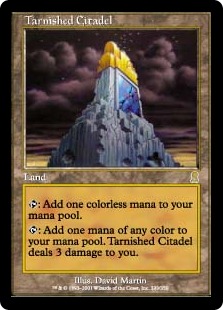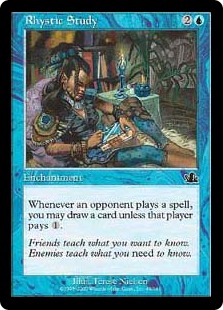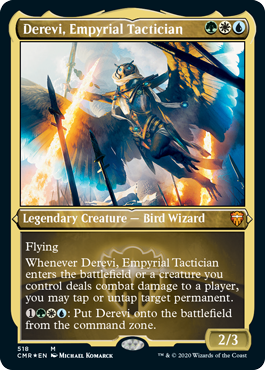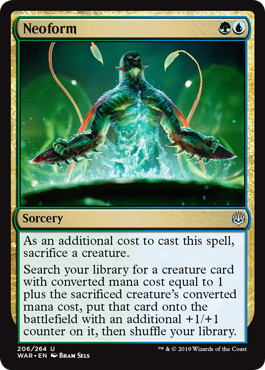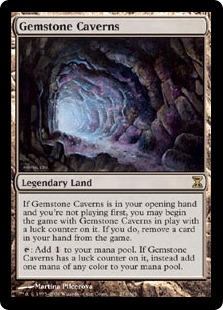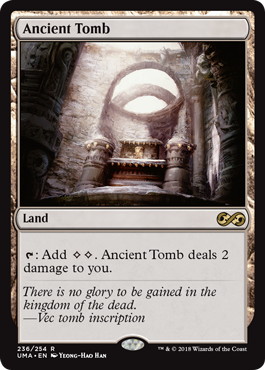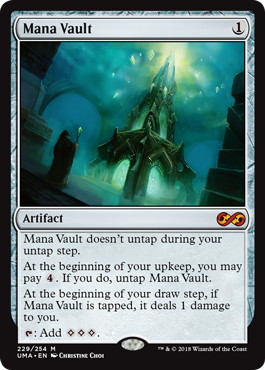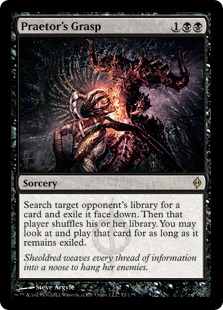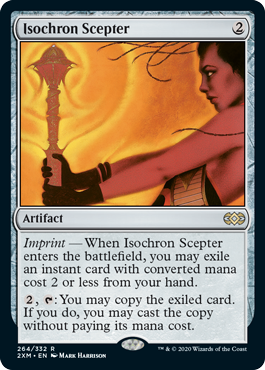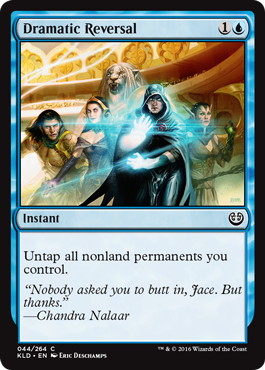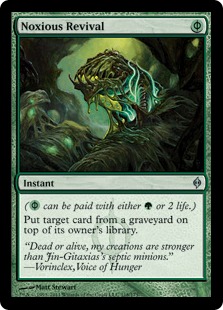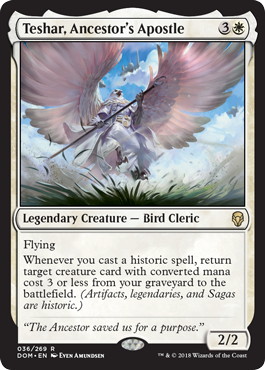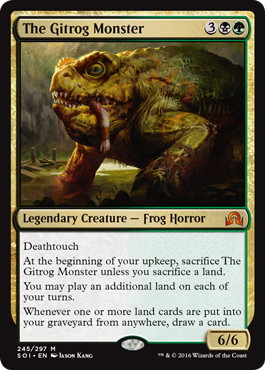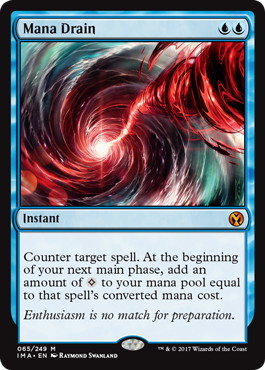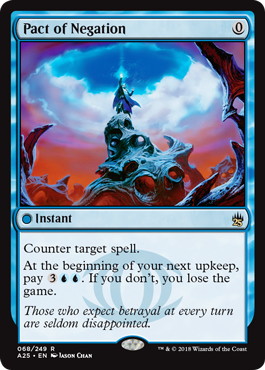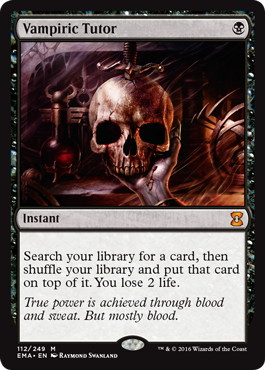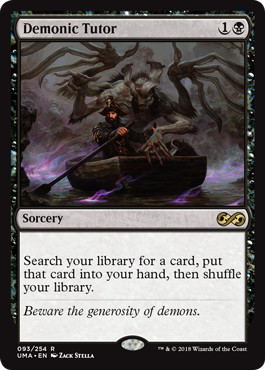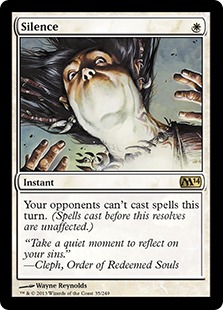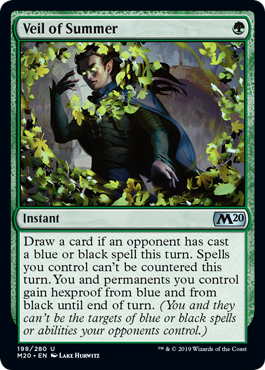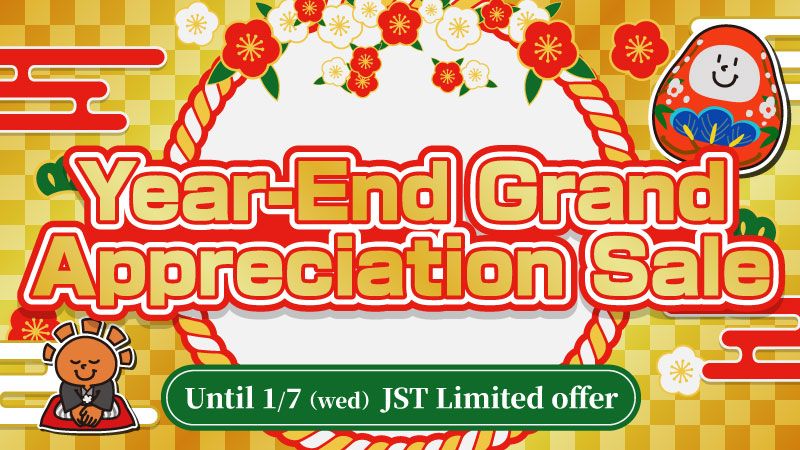Introduction
The last couple of months I’ve been playing competitive Commander over webcam for a team Commander league hosted by Nexus Super League. While the stakes of the event aren’t very high, it’s still been fun to divert my attention to something completely different in Magic.
For a while now I’ve seen some of the ins and outs of competitive Commander as two of my former roommates used to play a lot against each other, and it’s always been something I had considered getting into but didn’t have the time to prioritize over PT formats.
Now that I’m off the PT I’ve been glad to have gotten into it, and I even get to play with my former roommates and other friends over webcam on SpellTable.
What to Expect From Commander
For the most part the best decks in Commander are exclusively combo decks. Given you have 3 opponents all starting with 40 life, it’s naturally the best option to assemble a combination of cards that allow you to win the game regardless of life totals.
Right now the best way to do this is with 《Thassa’s Oracle》 alongside 《Demonic Consultation》 or 《Tainted Pact》. It’s a low mana 2 card combo that puts you in the 2 best colors in Commander, and on top of that 《Tainted Pact》 is an actively good card in Commander and 《Demonic Consultation》 is passable, so you really only have to play 1 “bad card” (《Thassa’s Oracle》) in order to fit this combo in your deck.
Beyond that you’ll typically see that Commander decks will find ways to use their Commander as a combo piece, essentially reducing the total number of cards they need to find in order to win. A common way of doing this is with a Commander that allows you to win with infinite mana.
There are a good amount of 2 card combos that generate infinite mana, so if for example your Commander is 《Thrasios, Triton Hero》, you can just draw your entire library and find a way to win from there.
I would say the third most common way you’ll see people win in Commander is with 《Underworld Breach》. In a similar fashion to how people won in Legacy while 《Underworld Breach》 was legal, you can pair it with 《Lion’s Eye Diamond》 or 《Lotus Petal》 and 《Brain Freeze》 to either mill the entire table, or mill yourself and cast 《Thassa’s Oracle》.
Though it’s worth noting that you don’t actually have to play blue to win with 《Underworld Breach》 in Commander, people have found ways to win utilizing things like the combination of 《Culling the Weak》 and 《Stitcher’s Supplier》 to get through their library until they find a way to win with the excess mana (or extra milled cards if they can find a different sacrifice outlet for 《Stitcher’s Supplier》).
I currently think that 《Underworld Breach》 is a little overrated in Commander because it usually ends up playing a high density of cards that aren’t very effective until you find and resolve 《Underworld Breach》.
That being said I think it’s good enough to play if you’re in the Jeskai color combination as you can utilize the combination of 《Intuition》 and 《Sevinne’s Reclamation》 to effectively allow 《Intuition》 to set you up almost entirely by itself (you’ll still need some sort of piece in your hand or graveyard). This package is seen in what is commonly regarded as the best deck, 《Tymna the Weaver》 + 《Kraum, Ludevic’s Opus》.
These aren’t the only ways you’ll see people win in commander, the format contains a very high amount of options, but this format is basically the combo format, as previously mentioned it’s simply the most effective way to win a multiplayer game with high life totals.
Combat damage can still make an impact on the occasional game, especially if prison elements get involved, such as 《Deafening Silence》 or 《Ethersworn Canonist》. In addition to the game slowing down to allow attacking to become a viable gameplan, the high volume of cards abusing high life totals leads to the starting life total of 40 to feel a lot lower in reality.
Cards like 《Ad Nauseam》 and 《Necropotence》 are staples of most black decks, and people will abuse pretty much every card that was designed to be played with 20 life as they can, almost always playing lands like 《City of Brass》 and 《Mana Confluence》, and sometimes even 《Tarnished Citadel》. That being said, while studying the format I’m not sure I’ve seen a single deck that doesn’t have access to at least one way to win with a combo.
The Best Decks
《Tymna the Weaver》&《Kraum, Ludevic’s Opus》
While there are an insane amount of options in Commander, I’m going to go over some of the decks that I believe are the best. I’m going to start with a deck that no one on my team has registered for our league so far, 《Tymna the Weaver》&《Kraum, Ludevic’s Opus》. Here is a list submitted by the previous winning team;
- Jacob Nagro
- – 《Tymna the Weaver》&《Kraum, Ludevic’s Opus》
- (Commander)
1 《Kraum, Ludevic’s Opus》
-Commander (2)- 1 《Island》
1 《Badlands》
1 《Scrubland》
1 《Tundra》
1 《Underground Sea》
1 《Volcanic Island》
1 《Hallowed Fountain》
1 《Steam Vents》
1 《Watery Grave》
1 《Arid Mesa》
1 《Bloodstained Mire》
1 《Flooded Strand》
1 《Marsh Flats》
1 《Misty Rainforest》
1 《Polluted Delta》
1 《Scalding Tarn》
1 《Verdant Catacombs》
1 《Windswept Heath》
1 《Wooded Foothills》
1 《Morphic Pool》
1 《Training Center》
1 《Underground River》
1 《City of Brass》
1 《Command Tower》
1 《Exotic Orchard》
1 《Mana Confluence》
1 《Gemstone Caverns》
1 《Spire of Industry》
1 《Ancient Tomb》
-Land (29)- 1 《Dockside Extortionist》
1 《Gilded Drake》
1 《Grand Abolisher》
1 《Phantasmal Image》
1 《Thassa’s Oracle》
1 《Hullbreacher》
1 《Opposition Agent》
1 《Notion Thief》
-Creature (8)-
1 《Brainstorm》
1 《Chain of Vapor》
1 《Dark Ritual》
1 《Demonic Consultation》
1 《Dispel》
1 《Enlightened Tutor》
1 《Flusterstorm》
1 《Gamble》
1 《Gitaxian Probe》
1 《Imperial Seal》
1 《Mental Misstep》
1 《Mystical Tutor》
1 《Ponder》
1 《Rain of Filth》
1 《Red Elemental Blast》
1 《Silence》
1 《Swan Song》
1 《Vampiric Tutor》
1 《Brain Freeze》
1 《Cabal Ritual》
1 《Demonic Tutor》
1 《Final Fortune》
1 《Lim-Dûl’s Vault》
1 《Mana Drain》
1 《Tainted Pact》
1 《Winds of Rebuke》
1 《Deflecting Swat》
1 《Fierce Guardianship》
1 《Force of Negation》
1 《Jeska’s Will》
1 《Intuition》
1 《Mnemonic Betrayal》
1 《Praetor’s Grasp》
1 《Sevinne’s Reclamation》
1 《Timetwister》
1 《Wheel of Fortune》
1 《Windfall》
1 《Ad Nauseam》
1 《Force of Will》
1 《Peer into the Abyss》
1 《Mystic Remora》
1 《Underworld Breach》
1 《Necropotence》
1 《Rhystic Study》
1 《Chrome Mox》
1 《Jeweled Lotus》
1 《Lion’s Eye Diamond》
1 《Lotus Petal》
1 《Mana Crypt》
1 《Mox Diamond》
1 《Mox Opal》
1 《Mana Vault》
1 《Sol Ring》
1 《Arcane Signet》
1 《Fellwar Stone》
1 《Grim Monolith》
1 《Talisman of Creativity》
1 《Talisman of Dominance》
1 《Talisman of Progress》
1 《Wishclaw Talisman》
-Spell (61)-
While there is a lot of flexibility in some of the specifics, a lot of these card choices are shared among not only other 《Tymna the Weaver》&《Kraum, Ludevic’s Opus》 decks, but Commander decks in general. While I’m currently under the impression that this isn’t the best deck in Commander, it’s still one of the best decks and it also best shows off the large amount of staples in the format.
At first I was skeptical of some cards always making the cut based on the color identity of your Commander, but after playing some games I’ve come to agree with a lot of them. A card like 《Rhystic Study》 certainly falls under the category of “punisher mechanic” where it gives your opponents options on how they want to play around it, but instead of giving these options to only one opponent you’re giving them to three opponents.
Even in a game that has been slowed down by various prison elements, where everyone can afford to pay for 《Rhystic Study》 on most turns, eventually there will come a turn where someone tries to win the game and other players will stop them, and on that turn the player with 《Rhystic Study》 will often find themselves drawing a good amount of cards.
It also just has high upside if you can manage to play it early in the game, as a lot of early turns in Commander involve developing mana accelerants, and it creates a lose-lose situation for the opponents that haven’t had a chance to deploy them yet.
You’ll also notice a few new Commander Legends cards making the cut. Most notably, 《Jeweled Lotus》, 《Hullbreacher》, and 《Opposition Agent》 have made their mark on the format already. 《Hullbreacher》 and 《Opposition Agent》 are both offering a non-symmetrical prison element with potential “gotcha” moments to really let yourself pull ahead.
On top of that 《Hullbreacher》 gives you combo draws with various 《Wheel of Fortune》 effects to essentially make the game unloseable. These 《Wheel of Fortune》 effects were already being played frequently in decks like these because they let you capitalize on your excessive amount of mana acceleration, while also potentially letting you come back in a long that you’ve fallen behind in.
《Jeweled Lotus》 has really made a huge shift in the types of Commanders we’ve been seeing since Commander Legends. When so many of the decks can be built so similarly, you’re doing yourself a huge disservice by not playing a Commander that can be abused with 《Jeweled Lotus》. Even if your Commander isn’t a combo piece, just something simple like 《Kraum, Ludevic’s Opus》 on turn 1 or 2 can really pull you ahead in game.
《Najeela, the Blade-Blossom》
《Jeweled Lotus》 also has really increased the power level of Commanders that are both combo pieces and castable with the 3 mana from 《Jeweled Lotus》, which brings me to what my teammates and I believe is the best deck, 《Najeela, the Blade-Blossom》.
- Jacob Nagro
- – 《Najeela, the Blade-Blossom》
- (Commander)
-Commander (1)- 1 《Badlands》
1 《Bayou》
1 《Savannah》
1 《Scrubland》
1 《Taiga》
1 《Tropical Island》
1 《Tundra》
1 《Underground Sea》
1 《Volcanic Island》
1 《Breeding Pool》
1 《Overgrown Tomb》
1 《Stomping Ground》
1 《Temple Garden》
1 《Watery Grave》
1 《Dryad Arbor》
1 《Arid Mesa》
1 《Bloodstained Mire》
1 《Flooded Strand》
1 《Marsh Flats》
1 《Misty Rainforest》
1 《Polluted Delta》
1 《Scalding Tarn》
1 《Verdant Catacombs》
1 《Windswept Heath》
1 《Wooded Foothills》
1 《City of Brass》
1 《Command Tower》
1 《Exotic Orchard》
1 《Gemstone Caverns》
1 《Mana Confluence》
1 《Tarnished Citadel》
-Land (31)- 1 《Arbor Elf》
1 《Avacyn’s Pilgrim》
1 《Birds of Paradise》
1 《Deathrite Shaman》
1 《Elves of Deep Shadow》
1 《Elvish Mystic》
1 《Fyndhorn Elves》
1 《Llanowar Elves》
1 《Noble Hierarch》
1 《Collector Ouphe》
1 《Dockside Extortionist》
1 《Drannith Magistrate》
1 《Gilded Drake》
1 《Mindblade Render》
1 《Thassa’s Oracle》
1 《Derevi, Empyrial Tactician》
1 《Hullbreacher》
1 《Opposition Agent》
-Creature (18)-
1 《Brainstorm》
1 《Demonic Consultation》
1 《Dispel》
1 《Enlightened Tutor》
1 《Flusterstorm》
1 《Gitaxian Probe》
1 《Green Sun’s Zenith》
1 《Imperial Seal》
1 《Mental Misstep》
1 《Miscast》
1 《Mystical Tutor》
1 《Ponder》
1 《Preordain》
1 《Pyroblast》
1 《Red Elemental Blast》
1 《Silence》
1 《Spell Pierce》
1 《Swan Song》
1 《Swords to Plowshares》
1 《Vampiric Tutor》
1 《Veil of Summer》
1 《Abrupt Decay》
1 《Assassin’s Trophy》
1 《Demonic Tutor》
1 《Diabolic Intent》
1 《Eladamri’s Call》
1 《Lim-Dûl’s Vault》
1 《Neoform》
1 《Tainted Pact》
1 《Deflecting Swat》
1 《Dismember》
1 《Eldritch Evolution》
1 《Fierce Guardianship》
1 《Fire Covenant》
1 《Force of Will》
1 《Carpet of Flowers》
1 《Deafening Silence》
1 《Mystic Remora》
1 《Utopia Sprawl》
1 《Wild Growth》
1 《Sylvan Library》
1 《Rhystic Study》
1 《Nature’s Will》
1 《Chrome Mox》
1 《Jeweled Lotus》
1 《Lotus Petal》
1 《Mana Crypt》
1 《Mox Diamond》
1 《Sol Ring》
-Spell (50)-
Thanks to the color identity rule, 《Najeela》 is one of the few 5 color Commanders that can be abused with 《Jeweled Lotus》, and only one of two possible 5 color commanders that can be cast for only 3 mana (《Esika, God of the Tree》 being the other).
At first glance, 《Najeela》 may look similar to a card like 《Goblin Rabblemaster》 or 《Legion Warboss》, and while she doesn’t get immediate value the turn she enters play on her own, she actually generates a huge advantage over the course of a longer game thanks to her ability not reading “Whenever one or more Warriors attacks”. This means so long as you can find an opponent without blockers, each time you attack you’ll likely double your total amount of Warriors.
In addition to that, if you have enough attackers she is a combo with either 《Derevi, Empyrial Tactician》, or 《Nature’s Will》, as you can use those attackers to generate mana and keep activating 《Najeela》. Usually this starts off finding an opponent with no or few blockers, and then as you generate more and more combats you’ll find yourself with an insurmountable amount of Warriors that you can use to eliminate everybody.
It may look like you would need 5 mana sources to combo with either of those, but 《Derevi》 allows you to target the same land to untap multiple times, and 《Nature’s Will》 can be triggered multiple times each combat so long as you deal combat damage to multiple opponents! This means these cards are basically 1 card combos with 《Najeela》, so long as you have the ability to produce 1 of each color of mana.
This deck also features the best combo in the format of 《Thassa’s Oracle》 + 《Demonic Consultation》/《Tainted Pact》, and basically every other card you could want in Commander deck given you have access to every color.
What I especially like about this deck is that it can play things like 《Deafening Silence》 and 《Collector Ouphe》, while also being quite resilient to prison elements itself. Not many Commanders compete with 《Najeela》 in a stalled out game, so you can also feel a lot better about 1 for 1ing opponents so long as you’ve got 《Najeela》 on the battlefield. It’s not uncommon to be able to eliminate a player who’s threatening just by accumulating enough Warriors to attack them to death, especially with the occasional “fair” activation of 《Najeela》 thrown in for an extra combat.
This deck also features a package you’ll frequently see in decks containing BUG, of mana dorks + 《Neoform》 and 《Eldritch Evolution》. Mana dorks offer explosive starts and help maximize turn 2 《Najeela》, but in abundance they can fall off later in the game. 《Neoform》 and 《Eldritch Evolution》 not only allow us to turn them into a potential 《Thassa’s Oracle》 or 《Derevi》, but also allow us to get a potential prison creature and slow the game down if need be.
《Thrasios, Triton Hero》&《Tevesh Szat, Doom of Fools》
The next deck I’d like to talk about is what I think may have the potential to be the best deck in the format but is rather unexplored, 《Thrasios, Triton Hero》&《Tevesh Szat, Doom of Fools》.
- Jacob Nagro
- – 《Thrasios, Triton Hero》&《Tevesh Szat, Doom of Fools》
- (Commander)
1 《Tevesh Szat, Doom of Fools》
-Commander (2)- 1 《Snow-Covered Island》
1 《Bayou》
1 《Tropical Island》
1 《Underground Sea》
1 《Breeding Pool》
1 《Overgrown Tomb》
1 《Watery Grave》
1 《Bloodstained Mire》
1 《Flooded Strand》
1 《Marsh Flats》
1 《Misty Rainforest》
1 《Polluted Delta》
1 《Scalding Tarn》
1 《Verdant Catacombs》
1 《Windswept Heath》
1 《Wooded Foothills》
1 《Llanowar Wastes》
1 《Morphic Pool》
1 《Nurturing Peatland》
1 《Rejuvenating Springs》
1 《Underground River》
1 《Undergrowth Stadium》
1 《Waterlogged Grove》
1 《Yavimaya Coast》
1 《City of Brass》
1 《Command Tower》
1 《Exotic Orchard》
1 《Gemstone Caverns》
1 《Mana Confluence》
1 《Ancient Tomb》
-Land (30)- 1 《Birds of Paradise》
1 《Deathrite Shaman》
1 《Elves of Deep Shadow》
1 《Elvish Mystic》
1 《Fyndhorn Elves》
1 《Llanowar Elves》
1 《Gilded Drake》
1 《Thassa’s Oracle》
1 《Hullbreacher》
1 《Opposition Agent》
1 《Spellseeker》
-Creature (11)-
1 《Brainstorm》
1 《Chain of Vapor》
1 《Culling the Weak》
1 《Dark Ritual》
1 《Demonic Consultation》
1 《Dispel》
1 《Flusterstorm》
1 《Gitaxian Probe》
1 《Imperial Seal》
1 《Mental Misstep》
1 《Mystical Tutor》
1 《Noxious Revival》
1 《Ponder》
1 《Preordain》
1 《Swan Song》
1 《Vampiric Tutor》
1 《Veil of Summer》
1 《Abrupt Decay》
1 《Assassin’s Trophy》
1 《Demonic Tutor》
1 《Diabolic Intent》
1 《Dramatic Reversal》
1 《Lim-Dûl’s Vault》
1 《Mana Drain》
1 《Muddle the Mixture》
1 《Narset’s Reversal》
1 《Neoform》
1 《Tainted Pact》
1 《Dismember》
1 《Fierce Guardianship》
1 《Force of Negation》
1 《Praetor’s Grasp》
1 《Timetwister》
1 《Yawgmoth’s Will》
1 《Ad Nauseam》
1 《Force of Will》
1 《Carpet of Flowers》
1 《Mystic Remora》
1 《Sylvan Library》
1 《Necropotence》
1 《Rhystic Study》
1 《Chrome Mox》
1 《Jeweled Lotus》
1 《Mana Crypt》
1 《Mox Amber》
1 《Mox Diamond》
1 《Mana Vault》
1 《Sol Ring》
1 《Arcane Signet》
1 《Fellwar Stone》
1 《Grim Monolith》
1 《Isochron Scepter》
1 《Talisman of Curiosity》
1 《Talisman of Dominance》
1 《Talisman of Resilience》
1 《Oko, Thief of Crowns》
-Spell (57)-
The initial idea for this deck was given to me from Allen Wu when we were talking about the format. Before Commander Legends and 《Jeweled Lotus》, 《Thrasios, Triton Hero》 with either 《Vial Smasher the Fierce》 or 《Tymna the Weaver》 was regarded as the best deck. Having an additional color is always nice, but the problem with those decks is that they don’t have something powerful to abuse 《Jeweled Lotus》 with.
《Tevesh Szat》 gives us this 《Jeweled Lotus》 payoff, and in general the combination of 《Thrasios》 and 《Tevesh Szat》 usually just lets us mulligan to a hand with a lot of mana acceleration and lets us use our Commanders to refuel. It’s also worth noting that because 《Tevesh Szat》 only costs a single colored mana, it opens the door for a lot more combinations to play 《Tevesh Szat》 early compared to something like 《Kraum》, including turn 1.
In one of my recent league matches I was able to start the game off with 《Gemstone Caverns》 on turn 0, and then have turn 1 《Ancient Tomb》 with 《Mana Vault》 to cast 《Tevesh Szat》 and leverage that start into a victory.
This deck is rather light on actual win conditions, almost always winning with 《Thassa’s Oracle》 in some manner. If we somehow don’t have access to 《Thassa’s Oracle》, 《Praetor’s Grasp》 gives us outs to win with someone else’s win condition, but also we can use 《Isochron Scepter》 + 《Dramatic Reversal》 to generate infinite mana with enough nonland mana sources, and then use 《Thrasios》 to draw our entire library.
From there we can play 《Hullbreacher》 and then start using 《Timetwister》 + 《Noxious Revival》 to cast any card in our library as many times as we want while keeping everyone else’s hands empty. The ability to cast any card in our deck as many times as we’d like means we can destroy any permanents with 《Assassin’s Trophy》, exile everyone’s library with 《Praetor’s Grasp》, and even make infinite birds or elks with 《Swan Song》 or 《Oko, Thief of Crowns》. While it’s certainly possible this deck could get into spots where it can’t really win any more, I think the slot of 《Praetor’s Grasp》 is enough respect for most games.
Like 《Najeela》, I think this deck can sort of play a protect the queen game around its Commanders. Instead of pressuring our opponents’ life totals we instead can go up a lot of cards while also threatening 《Tevesh Szat》‘s ultimate ability. 《Tevesh Szat》 can actually [-10] surprisingly quickly, and it’s also important to know that if he had exactly 10 loyalty when you used the ultimate, you can move him into your Command Zone before the ability resolves, therefore returning himself to play with his own ability. From there the Commanders you control might just be able to win the game, but at the very least you can sacrifice them to 《Tevesh Szat》 to draw 3 extra cards a turn.
While I would consider these three of the best possible decks, the nature 100 card singleton means that there are a ton of options in the format, and it’s hard to actually identify what the best possible deck could be. People find success with all sorts of decks, and while my competitive nature tells me that it would be suboptimal to not play at least 3 colors and 2 of them be blue and black, I think decks in basically every color combination can compete with each other.
While a Commander like 《Teshar, Ancestor’s Apostle》 or 《The Gitrog Monster》 doesn’t leave you with a lot of interaction for your opponents, you can build your deck around your Commander and streamline it to incorporate a lot of combo potential. In general interaction can actually be quite poor in Commander, and it’s usually used to help yourself proceed with your own game plan, rather than hinder a single opponent’s.
Multiplayer Game Theory
If you’ve never played a multiplayer format like Commander before, you might be surprised at some cards omitted from decklists. Almost no one plays 《Strip Mine》? Not every blue deck plays 《Mana Drain》? These are things I was asking myself when I started approaching the format, but after thinking and playing some it became a lot more obvious to me why this was the case and why it’s correct.
When you sit down for a 4 player pod you start out with a 25% chance to win. There is no 2nd place, you either win, lose, or draw, just like a 1v1 game. When you spend a resource on someone else’s resource (a 1 for 1) you’re effectively just diminishing your own and that player’s chances to win while boosting the equity of the other 2 players in the pod.
This is why most decks are built almost entirely to execute their own gameplan, and the interaction that they play is usually just there to help them force through their victory, whether that involves countering opposing interaction, or having answers to pesky prison permanents like 《Deafening Silence》 or 《Opposition Agent》.
Another aspect of multiplayer that’s perhaps a bit more obvious is that if you do something powerful but not immediately game winning you’ll place a target on your head for the other 3 players. 《Oko》 may be the most powerful Planeswalker of all time and it may look incredibly effective against opposing Commanders by effectively neutralizing them without returning them to the Command zone, but it’s incredibly hard to protect a Planeswalker when 3 opponents all have a turn to attack it. While 《Oko》 and a few other Planeswalkers see occasional play, most aren’t powerful enough to compete with the nature of multiplayer.
The most interesting aspect of multiplayer for me comes in the gameplay related to turn order. For those that don’t know, priority is passed in turn order, which leads to a decision I’ve encountered a few times when playing with countermagic in the format. If the person who’s turn proceeds mine casts an important or even game winning spell and I can counter it, should I?
As I mentioned previously 1 for 1ing a player is effectively a net negative for you and the player you are interacting with. So if the player before me in turn order resolves 《Thassa’s Oracle》 and then casts 《Demonic Consultation》 with the 《Thassa’s Oracle》 trigger on the stack, is it actually worth it for me to counter it? Or should I hope that if I pass priority that one of the other 2 players has an answer for it?
Obviously the answer to this question depends on context and there is no always correct answer, but I have found in that spot that the answer seems like a no quite frequently.
We can take an extreme case and say that my hand is 《Thassa’s Oracle》, 《Demonic Consultation》, and 《Pact of Negation》, and I have access to 5 mana on my turn. I think in that spot I would look for any chance I had that one of the other 2 players had an answer to the 《Demonic Consultation》, as then I would be able to combo on my turn with 《Pact of Negation》 backup and an opponent having 1 less counterspell.
While I’ve never encountered an example this extreme, it highlights the problem at hand when playing with interaction in multiplayer, and why most countermagic that sees play is usually 0 or 1 mana, as your goal in deckbuilding when you include such cards is to use them to protect your own proactive elements, rather than slow someone else down.
Because of this I would actually consider black to be the best color in Commander, due to the nature of the tutors allowing you to assemble various combos more easily, and if you have access to white or green, you can use cards like 《Silence》 or 《Veil of Summer》 that are actually more effective than most countermagic for forcing through your own game plan.
Conclusion
I know the barrier to competitive Commander might seem a little steep, but if you enjoy deck building and theorycrafting I think you might enjoy looking at the format more. Playing over a webcam can be a little strange at times, especially in a more competitive environment, but honestly when I’m just playing with my friends it’s quite enjoyable. I probably wouldn’t be a big fan of playing this format for high stakes or anything as there’s a lot of variance and sometimes another player’s misplay can be bad for your ability to win, but as far as treating it like a fun format like cube it’s been a blast.
Obviously casual Commander is one of if not the most popular formats of Magic, but someone like me is usually just too obsessed with optimization to not build their deck in a competitive manner. Once you enter an environment where everyone is on the same page and building their deck in a way that they believe maximizes their odds of winning, you can all have a lot of fun together.
I hope this inspires some of you reading to check out the format more. The best resource I can recommend for getting into the format is cEDH Decklist Database where you can browse a ton of decklists, a lot of which have a discord server and/or primer specifically for the decklist. As always if you have any questions for me feel free to contact me on twitter @jacobnagro. Thanks for reading.
Jacob Nagro (Twitter)


